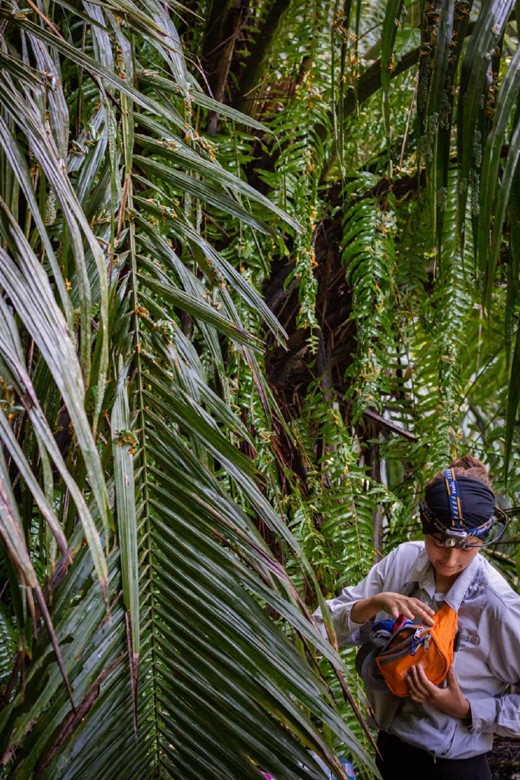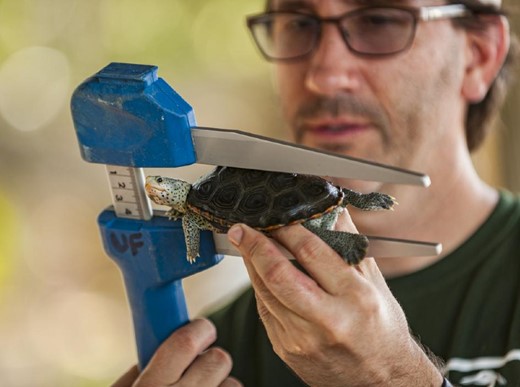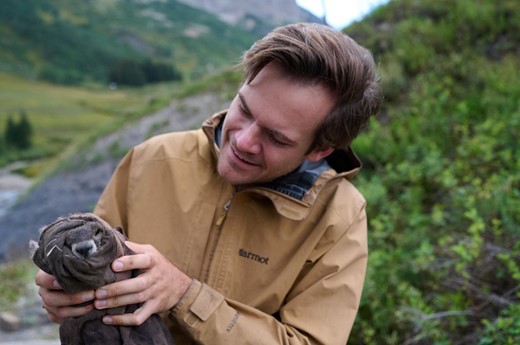-
PDF
- Split View
-
Views
-
Cite
Cite
Diane Bosnjak, Jyotsna L Pandey, AIBS Photo Contest: Capturing a moment in science, BioScience, Volume 73, Issue 4, April 2023, Pages 250–251, https://doi.org/10.1093/biosci/biad016
Close - Share Icon Share
The American Institute of Biological Sciences’ (AIBS) annual Faces of Biology Photo Contest (www.aibs.org/faces-of-biology) provides an opportunity for scientists to communicate about their work in artistic ways.
In 2022, the contest celebrated its twelfth year and was sponsored jointly by the Society for Integrative and Comparative Biology and AIBS. The theme of the photo contest is “Faces of Biology.” Submissions must depict a person—such as a scientist, field or laboratory researcher, collections curator, technician, student, or any other individual—engaging in biological research in a lab, with a natural history collection, on a computer, in a classroom, or elsewhere.
“Photography is one of many excellent tools scientists have to showcase their work to new audiences, including policymakers and the public,” said Scott Glisson, CEO of AIBS. “AIBS remains committed to strengthening scientists’ ability to communicate with broad audiences. An important part of that effort has been supporting this artful approach to sharing their research.”
The competition encourages scientists to showcase their biological research in a visual way to help counter stereotypes of scientists as men in lab coats looking through a microscope. Communicating science through imagery can help the public better understand and value biological research in its many forms and settings.
Brandon Güell won first place with a photograph showing recent Boston University graduate Elena Gomez among thousands of reproducing gliding treefrogs, Agalychnis spurrelli, at a remote pond on Costa Rica's Osa Peninsula. Gomez helped record and describe the natural history of explosive breeding in gliding treefrogs in 2021. Explosive breeding happens when tens of thousands of individuals aggregate for a few hours to breed on leaves that overhang a large pond.
“For most people, photographs and videos are simply more engaging than blocks of text,” argues Güell. “I love showcasing where and how my research is conducted—waist-deep in a large pond, surrounded by reproducing frogs, and armed with the essentials of tropical fieldwork: a good headlamp, duct and flagging tape, plastic bags, scissors, and a Sharpie.”
Güell believes that it's important for scientists to showcase their work through imagery. “Seeing the diversity of scientists that work on a variety of topics in the field or in the lab humanizes them and makes it easier for a broader range of people to relate to them.” He uses photography not only to communicate science but also to “help inspire a passion for wildlife and create advocates for conservation.”

Boston University graduate Elena Gomez examines thousands of reproducing gliding treefrogs at a remote pond on Costa Rica's Osa Peninsula. Photograph: Brandon Güell.
Science and research can sometimes be misunderstood, asserts second place winner Kristen Grace, adding, “visually showing researchers in action can help shed light on issues and solutions impacting society as a whole.” Grace works at the Florida Museum of Natural History, at the University of Florida in Gainesville, Florida, and takes photographs of science in action as part of her daily job. Photography is a fantastic way to communicate quickly, she says, stating that a powerful image accompanied by well-written and informative text can have profound impacts.

Coleman Sheehy, collections manager of herpetology at the Florida Museum of Natural History in Gainesville, measuring a diamondback terrapin. Photograph: Kristen Grace.
Grace captured a photograph of Coleman Sheehy, collections manager of herpetology at the museum, taking a measurement of a diamondback terrapin found off the Gulf Coast of Florida. Dr. Sheehy is seen collecting data on these terrapins during an undergraduate field class he designed, called Island Biology, to give undergraduate biology students a chance to learn fieldwork firsthand.
Third place went to a photograph of Conner Philson, PhD candidate at the University of California, Los Angeles, captured by Dave Basden. Conner is seen holding a baby marmot trapped and safely released unharmed as part of a 61-year-long study into their population dynamics, life history and behavior, and response to climate change. Started in 1962, the yellow-bellied marmot project at the Rocky Mountain Biological Laboratory, in Colorado, has trained biology students and scientists as one of the longest running studies of free-living mammals in the world.

UCLA graduate student Conner Philson holding a baby marmot trapped and safely released as part of a 61-year-long study at the Rocky Mountain Biological Laboratory, in Colorado. Photograph: Dave Basden.
“Everyone has a preferred platform for new information,” notes Philson. “As scientists, leveraging these many platforms allows important science communication to reach more broad and diverse audiences.”
Grace offers some advice on how to tell a good story with imagery: “Make sure that every part of the image contributes to what you are trying to convey. If it doesn't, reframe it. Get close (safely), and show action.”
Güell suggests trying to capture science from unique perspectives. “One way to do this is by adding uncommon yet interesting tools, backgrounds, or other subjects in your shot while keeping the focus on something more aesthetic.” Most important, he adds, is having fun. “Science is sometimes thought of as a mundane process, but often, our work is filled with excitement and surprises, especially when working with animals and other living organisms (including other scientists!).”
Philson agrees. “Who doesn't love a photo of a charismatic animal, stunning microbe, or vast landscape?”
All three winners received a 1-year subscription to BioScience. Güell also received |${\$}$|250. The 2023 contest is currently open. Visit the AIBS website for more information.
Author Biography
Diane Bosnjak ([email protected]) is membership manager and senior communications manager, and Jyotsna Pandey ([email protected]) is director of public policy at the American Institute of Biological Sciences.



